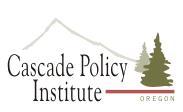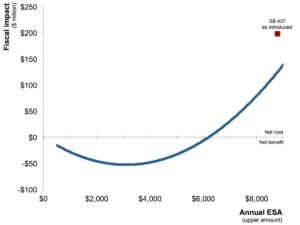Education Savings Accounts Can Help Students Without Hurting Public Schools
Cascade Policy Institute, By Steve Buckstein 
School choice programs allow students to choose schools or other educational resources and pay for them with a portion of the tax funding that otherwise would go to the public school assigned to them by their ZIP code.
While school choice is popular with large segments of the public, opponents often claim specific programs like vouchers or Education Savings Accounts (ESAs) drain funds from the public school system, and so must be rejected.
What opponents overlook is that public funding for K-12 education should actually help educate students, not simply fund specific schools whether or not they meet specific student needs.
The latest and most versatile school choice programs sweeping the country are Education Savings Accounts. ESAs deposit a percentage of the funds that the state otherwise would spend to educate a student in a public school into accounts associated with the student’s family. The family may use the funds for private school tuition or other approved educational expenses such as online learning programs, private tutoring, community college costs, higher education expenses, and other customized learning services and materials. Funds remaining in the account each year after expenses may be “rolled over” for use in subsequent years, even into college.
Here in Oregon, this school choice debate will center upon the latest proposal to offer all K-12 students many more educational options: a universal Education Savings Account program contained in Senate Bill 437. SB 437 is also known as the Educational Opportunity Act: The Power of Choice.
So, will this bill drain funds from public schools, or will it leave them harmless while allowing many students to make different choices? The answers depend on several assumptions which have now been evaluated in a new review and evaluation of a universal ESA program for Oregon.
The amount of the ESA deposits is the biggest driver of fiscal impacts. As introduced, SB 437 would provide participating students with disabilities and in low-income households $8,781 per year (current state funding) in their ESAs. All other participating students would receive $7,903 (90% of current state funding).
As Introduced, based on the assumptions below, the Fiscal Impact on the state and local school districts could be in the range of $200 million annually based on the following assumptions:
■ 90 percent of 61,000 students currently enrolled in non-public education would participate in the program.
■ Seven percent of 563,000 students currently enrolled in public schools would participate.
Based on these assumptions, the program has a fiscal “break even” for state and local school districts combined at an ESA annual amount of $6,000 for each participating student with disabilities and/or in a low-income household and $4,500 for all other students. These are the dollar amounts proposed in the -1 Amendment to the bill.
The Figure below shows the net fiscal impact on state and local budgets across a range of ESA amounts, again based on the assumptions above.
If fiscal impact were the only measure by which to evaluate this ESA program, the Figure shows that the program is “optimized” at an amount of $3,000 for each participating student with disabilities and/or in a low-income household and $2,250 for all other students. Once fully implemented, the program would save state and local governments $53 million a year.
Figure:

Of course, fiscal impact is not and should not be the primary measure of this or any well-designed school choice program; but it is a political reality that such a program should not impose a fiscal burden on the state at a time that all budgets are under pressure.
The primary measure of this ESA program should be that it offers Oregon families as much choice as possible in how their children take advantage of educational opportunities funded by the state.
Disclaimer: Articles featured on Oregon Report are the creation, responsibility and opinion of the authoring individual or organization which is featured at the top of every article.

